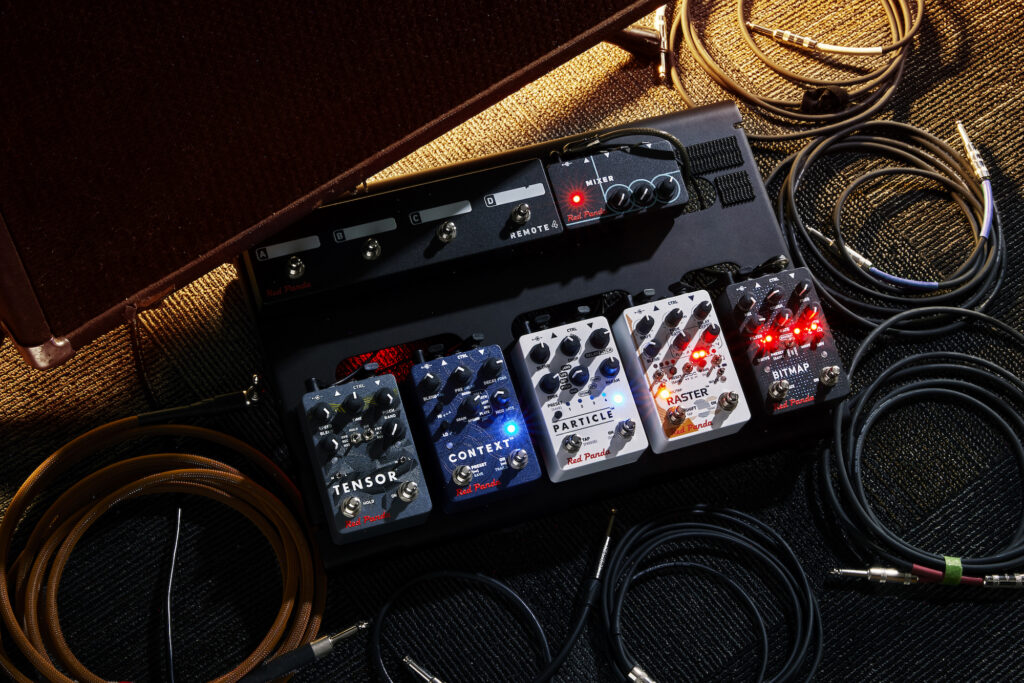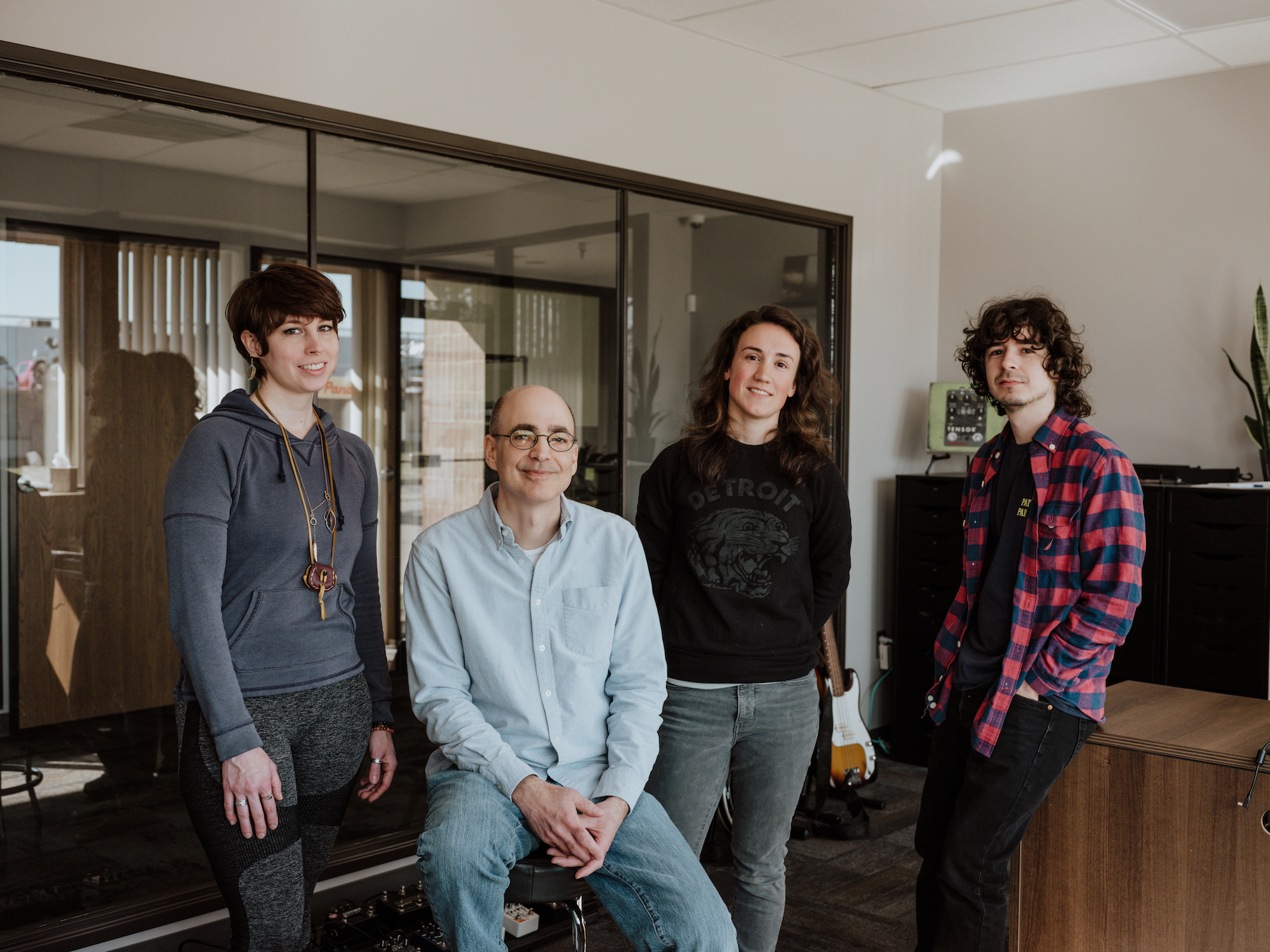As far as guitar effects pedals go, there’s no shortage of simple stompboxes that distort the instrument’s sound, add a delay or an echo, or other basic modifications. Then there are others that take things a step further, creating unique, multi-tiered effects that completely reshape a musician’s tone. And finally, some companies make pedals so complex and over-engineered that some artists feel they need a textbook to use them.
The folks at Red Panda know that they’re in that last group, but they’ve made a name for themselves among those looking for the complex high-end pedals that can take guitar noises to places they usually can’t reach. Since releasing the first iteration of their now-renowned Particle granular delay pedal in 2011 (after a couple of smaller projects in the two years before), the Detroit-based builder has become one of the go-to names for the curious and the experimental .
SPIN spoke with Red Panda’s Engineer and Owner, Curt Malouin, about the blend of science and artwork that each of their pedals add to a board.
SPIN : Why did you decide to start Red Panda?
Curt Malouin:I’m an electrical engineer, not really a musician. I was actually working on software synthesizers from 1995 until I started Red Panda in 2009. So I had an intense day job in the auto industry and ended up sitting in front of a computer 16 hours a day doing both music software and engineering software for my day job. When I was a kid, we used to use guitar pedals as [synthesizer] effects because they were affordable, simple and you can run anything through them. I got burned out sitting in front of computers all day and night, and a friend of mine just happened to send me a video of an old organ playing through a guitar pedal — and that brought back some of those memories for me. The nice thing about guitar pedals from an engineering side is that it’s a small enough thing that one person can do all of the design, but when you combine it with other pedals, it creates a very complex, expressive signal that you can manipulate with different effects to create a really unique sound. I’ve always been interested in engineering for music, and I just feel lucky that we get to build tools that people can then use to create really interesting sounds with.
To this day, nothing that Red Panda makes is a “standard” commonplace pedal. Was that an intentional decision or just what you were interested in?
It was definitely intentional, and there were two sides of it. One is that there are a lot of great “standard” or “basic” pedals like flangers, overdrives and delay pedals out there. Brands like MXR and Boss make great pedals, and I think there are almost too many pedals nowadays that are just variations on designs that have been around a long time. Exploring different areas is interesting to me, and the advantage of being a small company is that I can choose really hard problems to work on instead of just building out a catalog that has one of everything. I like pushing the limits as to what you can do to the guitar signal, but still keep it musical without turning it into noise.

It seems like Red Panda has a really devoted following that’s not necessarily into those “standard” pedals, but really appreciates the complexity of what you’re doing.
It’s great to see people take these really complex, deep pedals we make and use them in ways that we never imagined. Our pedals are definitely designed for experimentally-minded musicians who don’t mind digging in and exploring the complexity of the pedal. We try to design that complexity so it’s easy to explore and find your way around, but our pedals do a lot. We tend to find that people will dig in and really try to explore all the different corners of the pedal, and it’s been really amazing and fascinating to hear what people do with them. Now, we know our place in the ecosystem of pedals, because we’re a small company of four people. I do all of the engineering, but I’m also the owner and the bookkeeper and all of that. When we try to introduce new ideas, we know that other companies will inevitably grab bits and pieces of stuff and come up with their own take on it — which is always interesting to see. But our pedals are very R&D and engineering intense, because we’re trying to push the limits. Then once the ideas are out there, they become part of the guitar ecosystem and more people are rearranging and borrowing stuff for their own takes on the same ideas. So our main challenge is balancing the business side of it and staying ahead so we can give ourselves enough time to design new products and push new boundaries.
Speaking of people stealing some of your ideas, in an industry where such a large portion of sales either comes from clones or derivatives of other products, what made you want to take such a different research-driven approach to creating Red Panda’s pedals?
Part of it is just being a bad business person and not being interested in doing the marketing side of things. I want to focus on the products and the engineering and build a certain type of very deep pedal for people who are into that. There are some really wonderful takes on the Tube Screamer, but that’s less about the research and development and more time on the marketing side. Also, the way guitar pedals have been marketed has changed over the years. People find things through YouTube and Instagram and stuff like that, so it’s amazing to see people demo our stuff and come up with really creative ways to use them. So I let that demo culture do the marketing, because I really want to focus on the design side. It’s more of a niche product that’s not for everyone, so we have to do things that have their own space.
Going back to the complexity of your pedals, what would you say to the people who are turned off or scared by how much they have going on?
Well, there are people who buy our pedals that have the same processors in them that are in a MacBook or an iPad, and they just use it like a regular pedal. They never have a problem with it, so they never update it, and they just treat it like a normal pedal. That’s why we’ve shied away from putting displays or menus on the pedal, because I think that changes the way that you interact with it. On the other hand, we’re never going to anticipate every way that someone’s going to use one of the pedals. So what [our software] allows us to do is tweak the pedals to improve them over time. We might fix or improve something that affects less than 1% of the people using it, but everyone gets the benefit of the improvements without having to buy a new pedal. Most people don’t use MIDI and that kind of stuff, but you can hook it up to your computer and use our web-based editor if you really want to dig in and download presets and stuff like that. You can take it gradually one step at a time.





